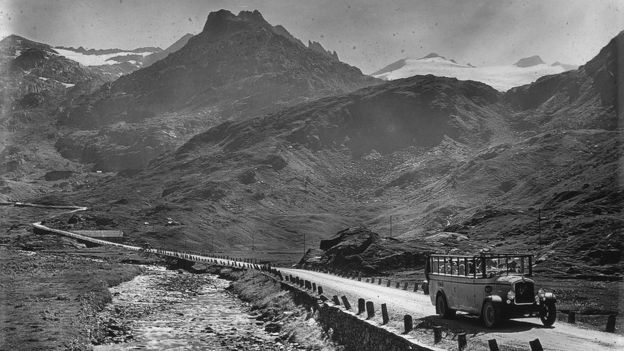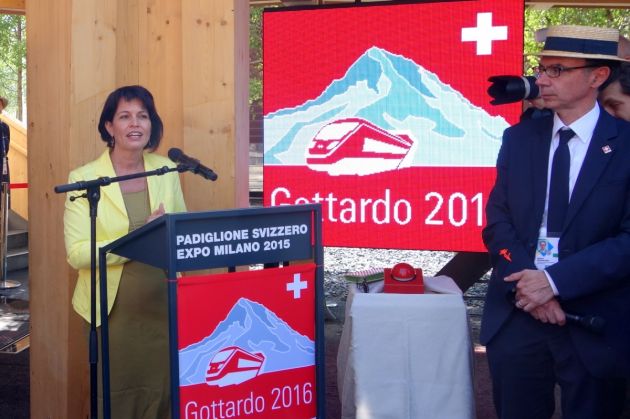Switzerland's new train tunnel has short spell as world's longest and deepest

It's the world's longest and deepest rail tunnel operating to Switzerland, after almost two decades of construction work and it was completed on time.
It will ease traffic congestion, increasing trade and tourism.
Swiss voters approved the $12.5 billion project in 1992 and it took 17 years of meticulous construction and it's a focal communications point for Switzerland, Italy and Germany.
Italian Prime Minister Matteo Renzi, Swiss Federal President Johann Schneider-Ammann, German Chancellor Angela Merkel and French President Francois Hollande rode through the tunnel for the opening.
They were present for an extravagant celebration at which musical bands, dancers, took part with a tunnel theme song and yodellers added a Swiss touch.
Represenatatives from Christianity, Islam and Judaism attended a blessing inside the tunnel.
CUTS TRAVEL TIME
The route will slash travel times, making roadway traffic easier and cut the number of lorries disgorging pollution between Europe's north and south.
Passenger trains will be able to travel up to 250 km/h (155.3 mph) through the tunnel, reducing travel times for trans-Alpine train journeys by 50 minutes.
The two-way tunnel will open for commercial service in December taking up to 260 freight trains and 65 passenger trains a day.
Switzerland has many tunnels intersecting the mountains on its borders and there are already two passes through the Swiss Alps.
The first was also a railway tunnel, built in 1882, which the president of Switzerland at the time, Simeon Bavier, enthused was, "A triumph of art and science, a monument to work and diligence! The barrier which divided nations has fallen, the [Swiss Alps] have been breached. Countries have moved closer to each other, the world market is open!".
The Gotthard Base Tunnel overtakes Japan's 53.8 kilometer (33.4 mile) Seikan Tunnel as the world's longest and is the deepest, running some 2.3 kilometers (1.4 miles) underground at its maximum depth.
Switzerland is not a member of the European Union, but had a strong turnout from EU political leaders as the tunnel is a key shortcut for traffic in the region.

"Switzerland leaves Germany looking old," was the headline in Die Welt newspaper in Germany, Swissinfo reported.
By finishing the Gotthard Tunnel on time, "a small country has shown how to achieve something great", alluding to the never-ending construction of Berlin's new airport.
Germany's Frankfurter Allgemeine Zeitung noted, "Little Switzerland has once again put the rest of Europe to shame with its professionalism." The country had proved "there is no law of nature according to which costs for large construction projects must multiply".
The Swiss Berner Zeitung wrote of the symbolism of a structure that brings European countries closer together "at a time when Switzerland's relationship with the EU has never been so open and unclear."
It said the main reason for the tunnel is getting freight off roads and onto rail tracks, "but this shift will only work if our neighbours keep their side of the bargain."
The Nordwestschweiz also focused on the European Union. "Switzerland opened the new tunnel yesterday with plenty of self-confidence.
"It should look after its interests with Europe with the same self-confidence – not only concerning the approach routes to the tunnel, but also our bilateral relations and the rules of immigration."
Switzerland's fame may be relatively short-lived, however, The Irish Times reported.
Austria's 64-kilometer (39.75 miles) Brenner Base tunnel is set to open in 2026. And a proposed 80-kilometer (50 mile) underground train link connecting Helsinki in Finland and Tallin in Estonia is awaiting approval.
And then China says it plans to build a 123-kilometre (76 mile) tunnel underneath the Bohai straits to reduce journey times between the port cities of Dalian and Yantai from eight hours to 45 minutes.
